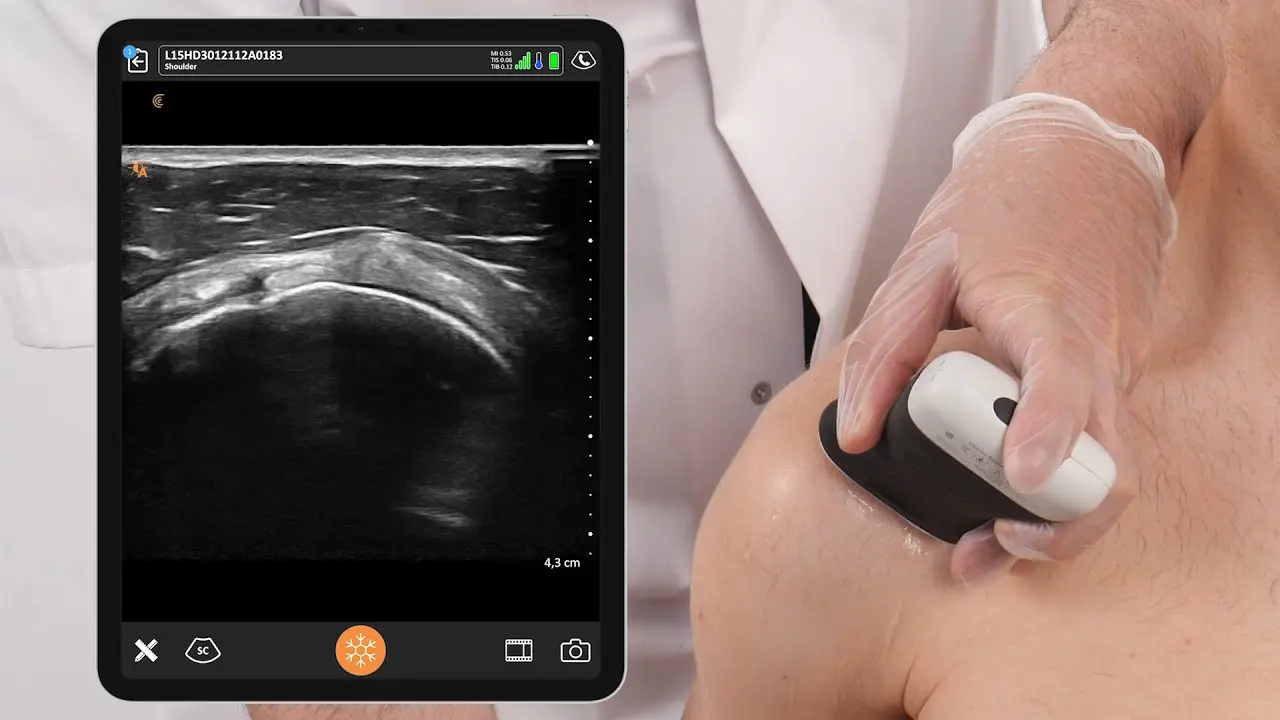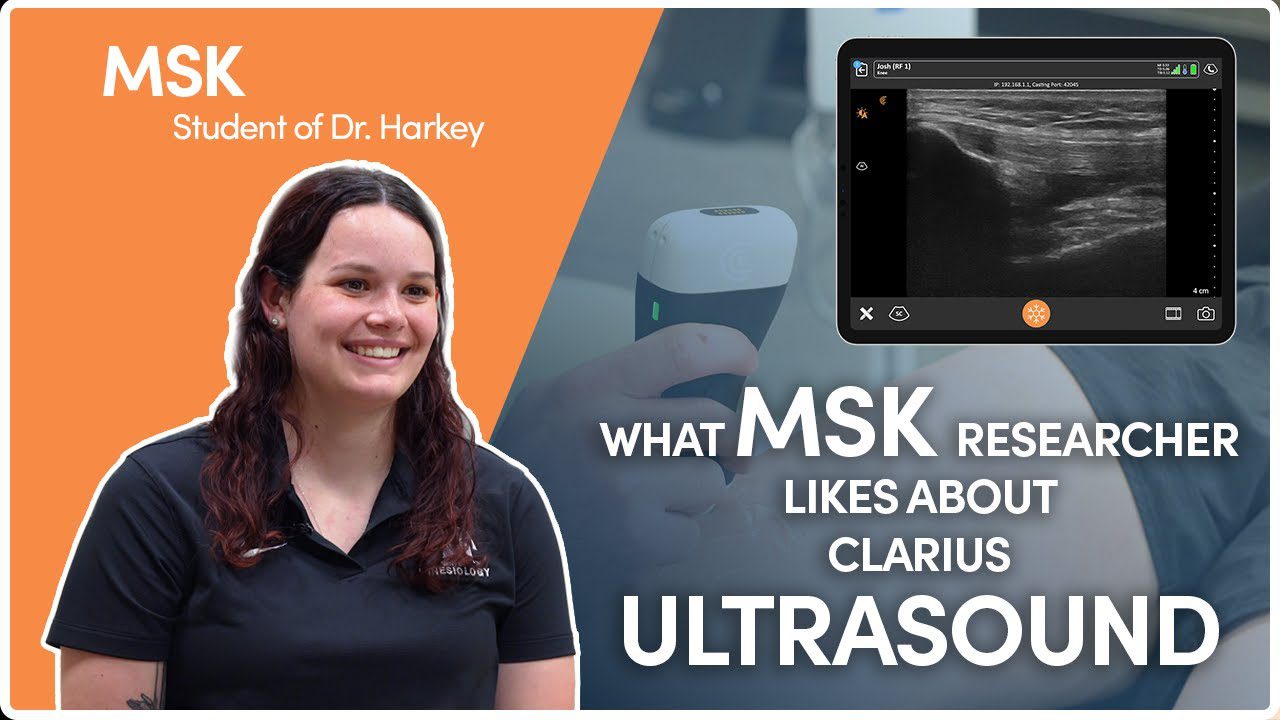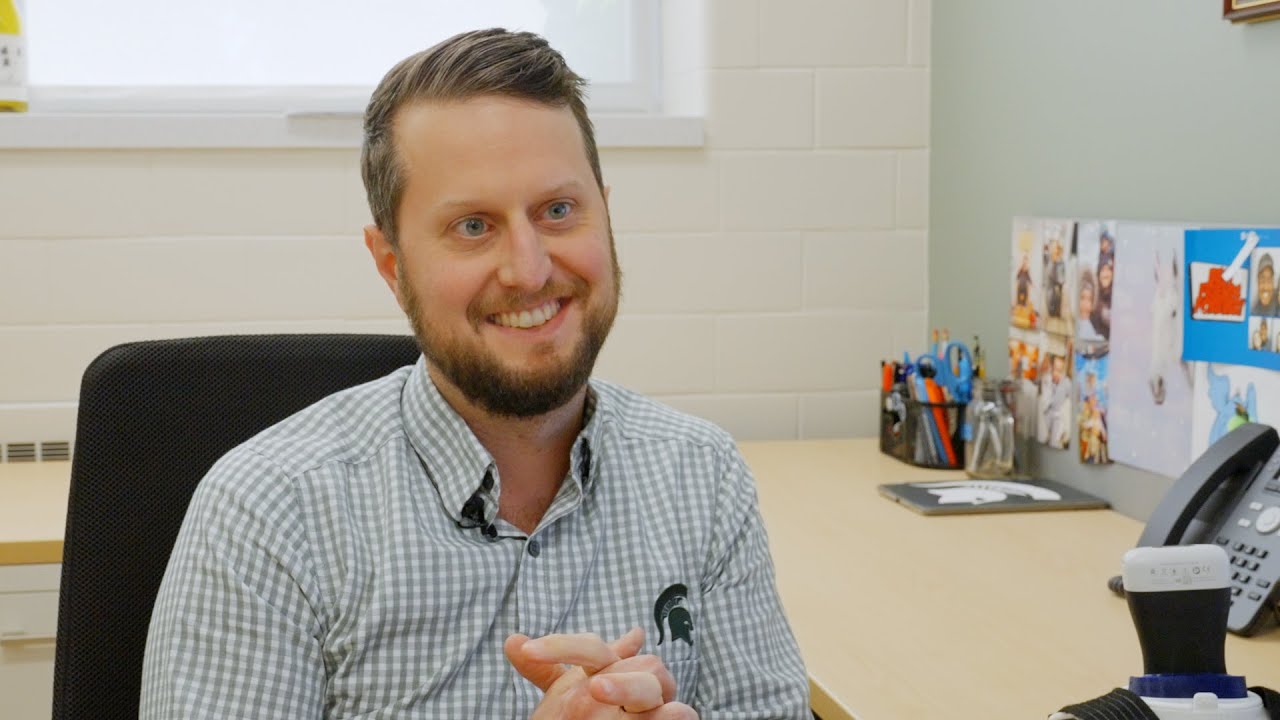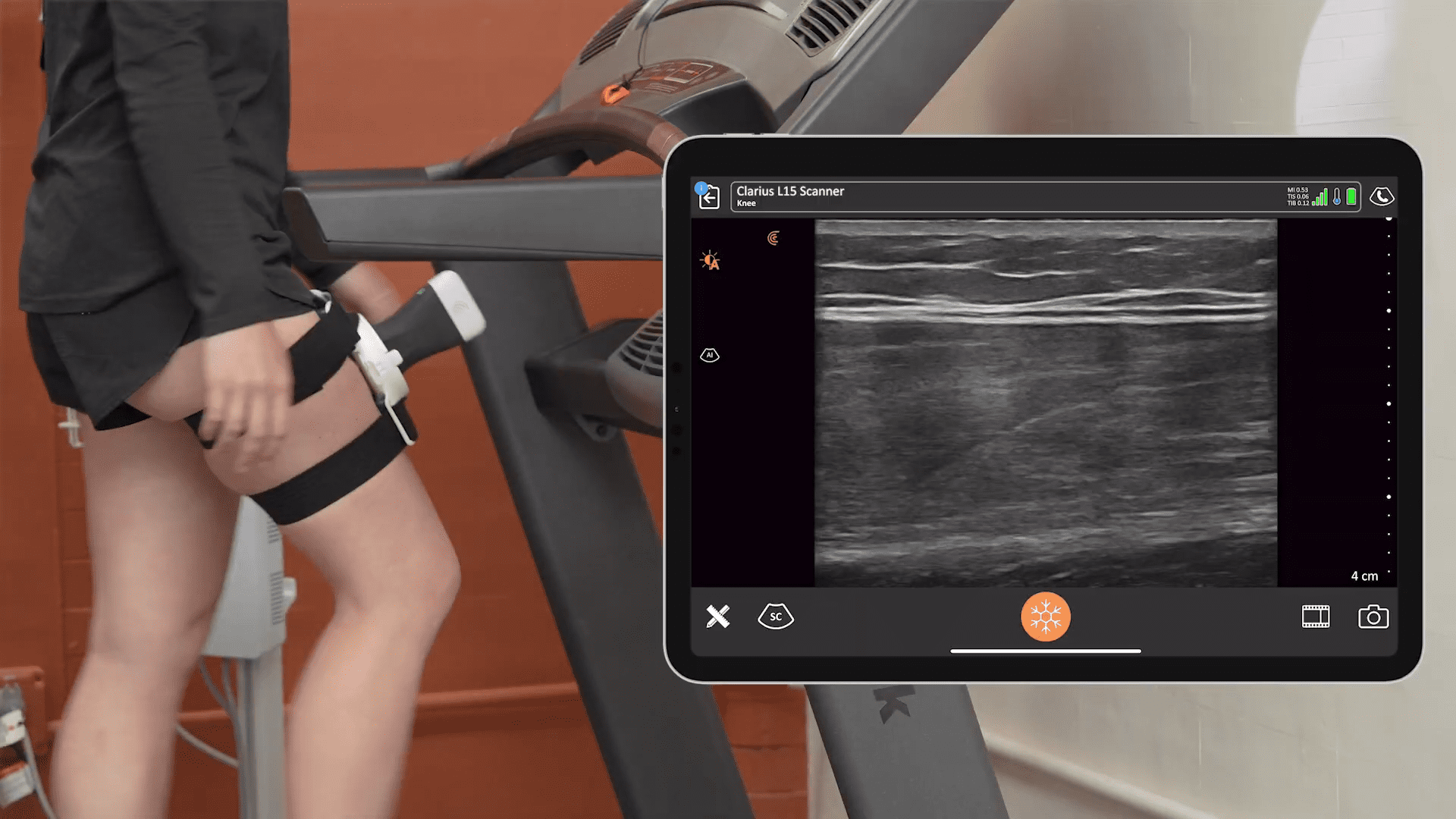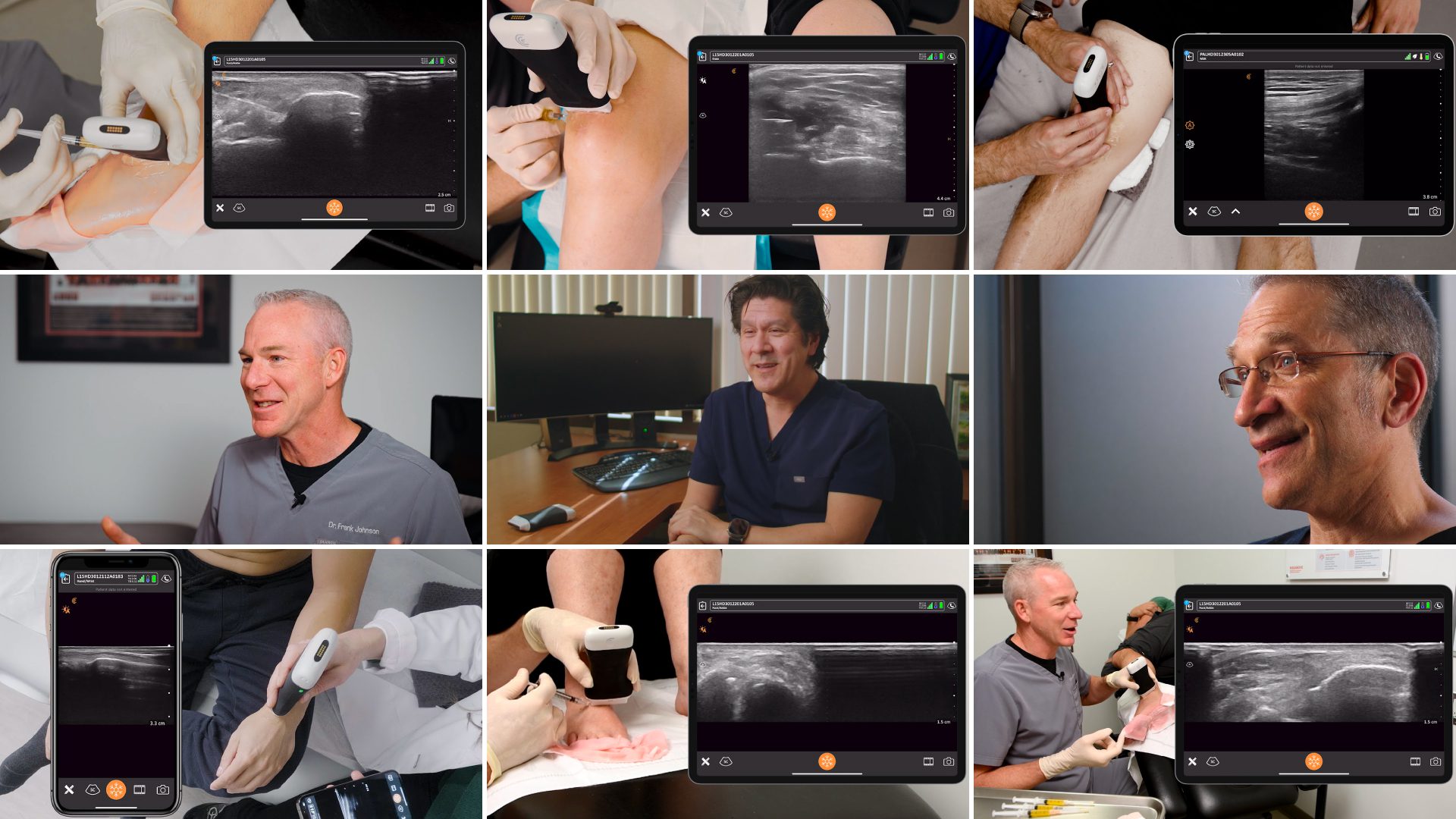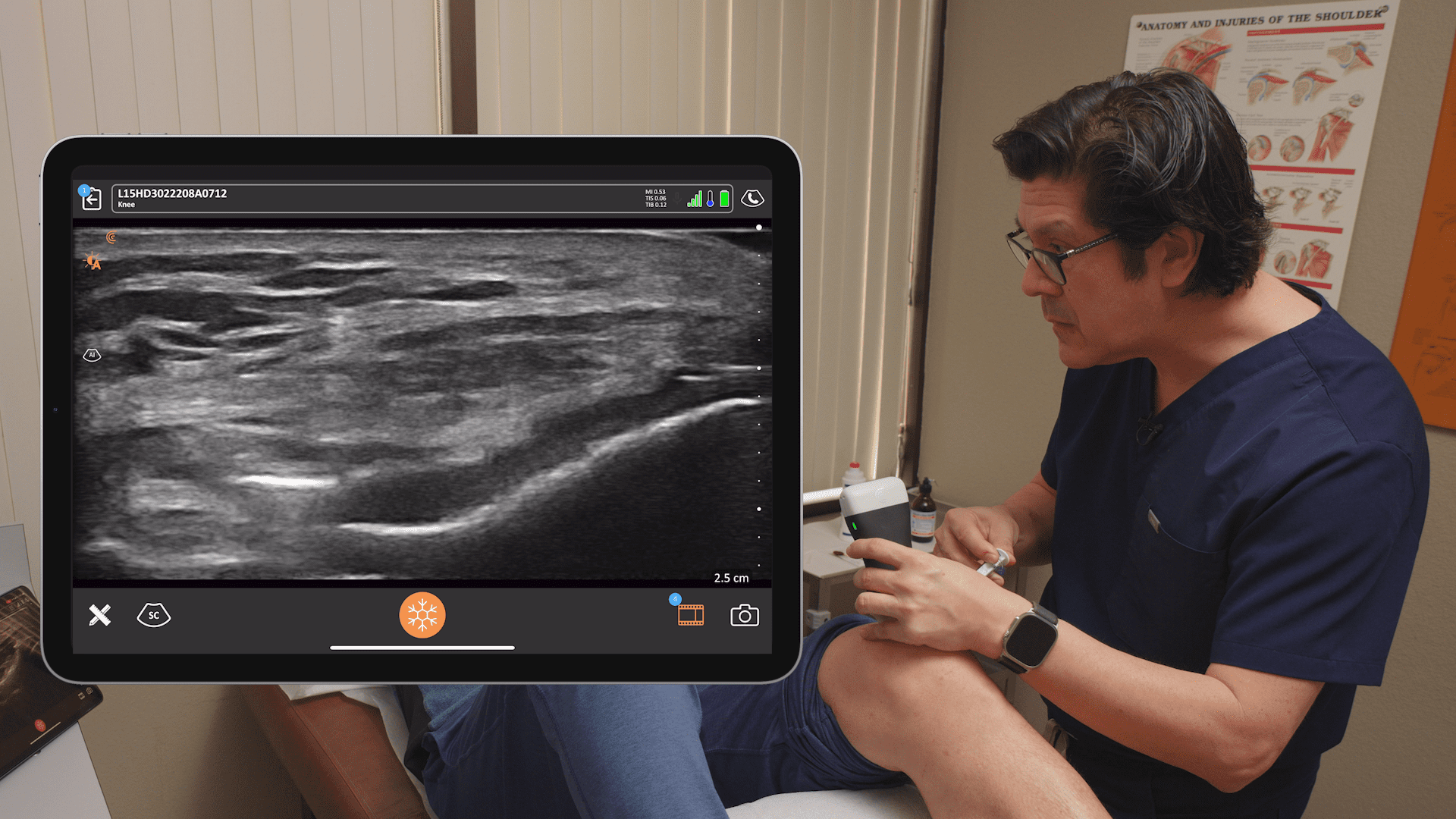Last week, we introduced the elastography imaging mode available on our Clarius Ultrasound platform. Greg Fritz PT, DPT, RMSK, a practicing physiotherapist in Washington State, has been testing elastography with his Clarius scanner at his small practice. Here is the detailed account of his experience with this advanced Clarius feature.
Physical Therapists, who critically identify musculoskeletal diagnoses, benefit from an understanding of tissue pathology on a cellular-level. There are phases in the healing process of varying tissue types that require a waiting period to responsibly initiate and manage restorative loading. Historically, we determine a timeline for next-step rehab interventions based on the length of time that has passed since the date of injury.
Now with the use of high-resolution B-mode ultrasound imaging, we are able to see harbingers of healing (e.g. callus formation in fractures). We can use these markers to decide on a unique plan for load progression for each individual.
With MSK sonography, Doppler is a valuable tool to identify the state of tissue inflammation. Since reactive tissue reconstruction requires the infrastructure of fluid flow to facilitate metabolism to destroy damaged tissue, reconstruct new support matrices, and wash away the associated waste products, we can visualize the state of fluid flow with Color and Power Doppler.
The development of elastography (EUS) provides a new source of information for us to critically assess the characteristics of diseases within musculoskeletal tissue. For example, I have read about the ability to identify signature echo profiles in collagen fibers that are showing a marked increase in the vulnerability of developing metabolic breakdown and the neovascularity of reactive inflammation in cumulative overuse disorders.
At the moment, there are very few quality studies that clearly identify rules for interpreting the data acquired with this new tool. That’s partly because historically elastography has only been available on the costliest imaging equipment. Since these systems are well beyond the financial reach of community MSK clinicians, the outcome of the few academic studies available, have had minimal practical value.
Amazingly, Clarius Mobile Health is the first to make a Strain Elastography option available on their newest line of affordable pocket ultrasound scanners. As Elastography becomes more accessible, I feel it’s possible that we will begin to see a steep rise in the clinical value of this tool to assess tissue health and readiness for advances in functional loads.
Many tissue recovery models admit changes in tissue texture as our collagen softens with disease and overuse or stiffens with inactivity, reconstruction scarring and muscle tensioning pain patterns. Muscle trigger points and classic fibrotic thickening with varying MSK syndromes offer us a blank canvas to „hands-on“ test the applicability of this information to our practices.
I was lucky to be able to test drive the elastography feature on my Clarius HD Scanner. In my small-town physical therapy practice, I have been able to see the softening „echo-signatures“ in the anchor tendons of wrist extensors at the elbow (Tennis Elbow) and the color profile of interfibrillar breakdown in Achilles insertional tendinopathies.
I am hopeful that with every exposure to this stiffness data, I will develop an improved clinical understanding of its value to the decisions I have to make in intervention options for my patients.
I am thankful that Clarius has brought this level of advanced quality imaging to an ultrasound device that is affordable for clinicians like me. Here’s to a future with greater, more relevant tissue diagnostic information to the fingertips of more and more POC clinicians.“
Greg was one of three physical therapist recipients in the nation who earned a Pioneer Certificate in Musculoskeletal Ultrasound Imaging (RMSK) in Washington State. His team at Anacortes Physiotherapy is dedicated to utilizing proven and emerging techniques that are based on sound, scientific principles and evidence-based research, while emphasizing clinical diagnostics and orthopedic manual therapy.
For more information on portable ultrasound for MSK visit our Clarius L15 HD scanner webpage.
Check out this case by Greg Fritz, PT, DPT, RMSK posted on Clarius Cases @clariusmhealth https://t.co/916p8SPMjO #UltrasoundAnywhere
— Greg Fritz, PT, DPT, RMSK (@gregfritzpt) November 30, 2018




